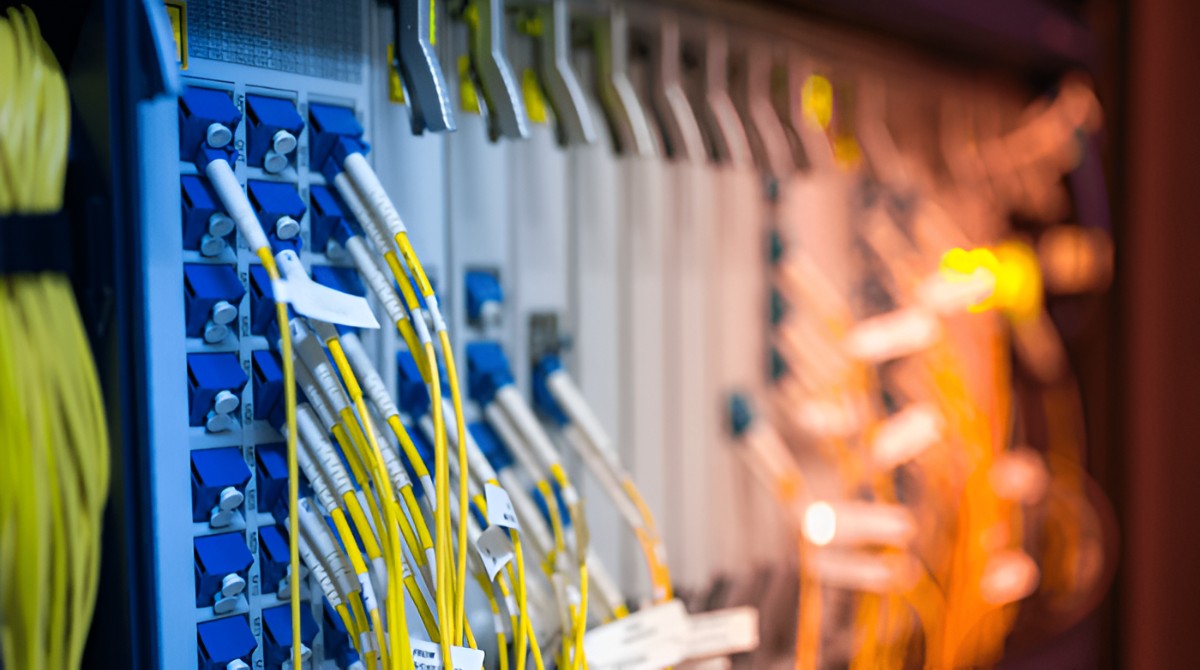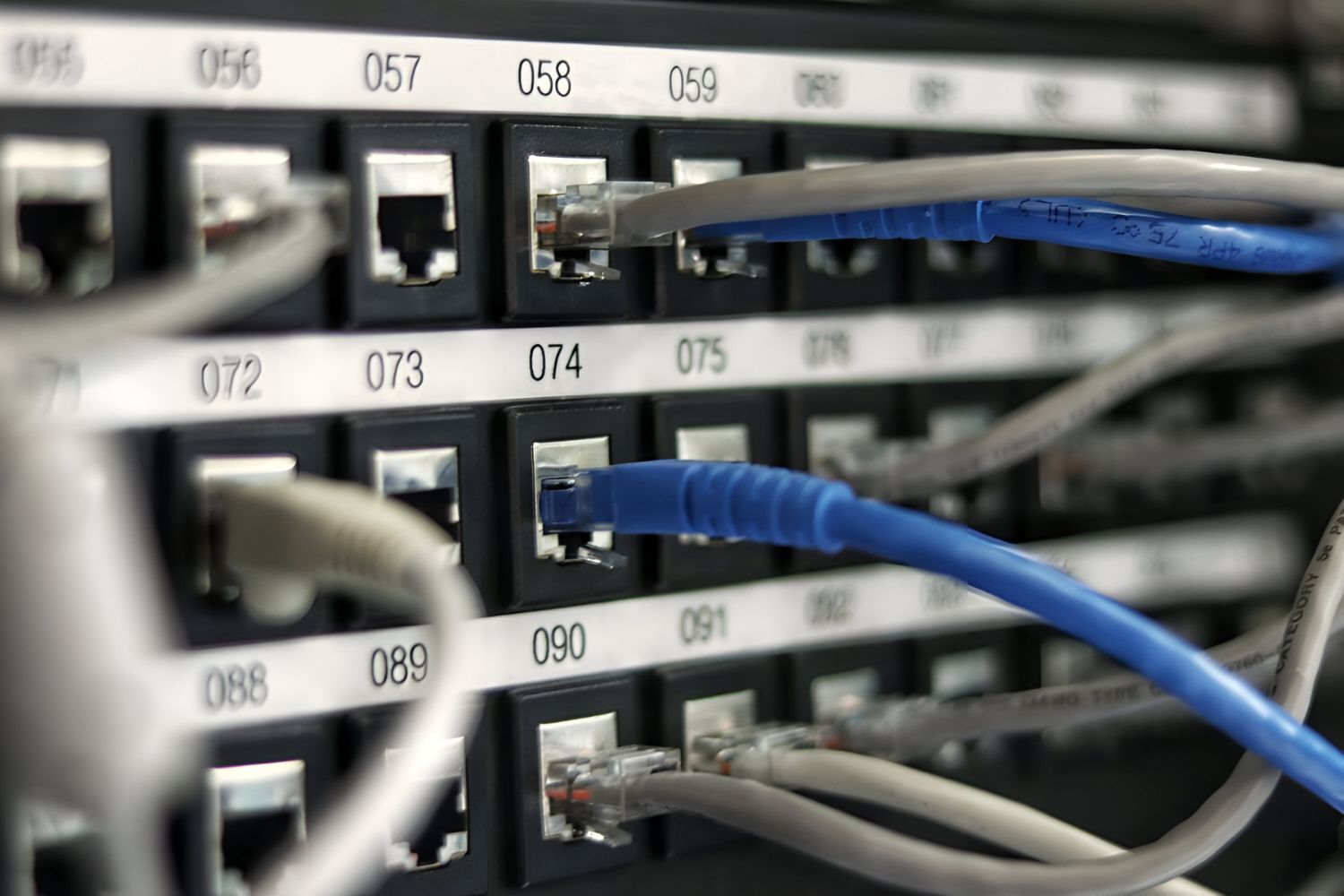Introduction
P2P, or peer-to-peer, networks have become increasingly popular in recent years, revolutionizing the way we share and access information. These networks are a decentralized form of computer networking, where individual computers, or peers, connect directly to each other without the need for a central server. By leveraging the power and resources of multiple computers, P2P networks offer a more efficient and reliable way to distribute data.
Unlike traditional client-server networks, where a central server stores and distributes data to connected clients, P2P networks distribute the workload among all connected peers. This distributed architecture not only increases the network’s scalability and fault tolerance but also eliminates the reliance on a single point of failure. As a result, P2P networks have gained popularity in various domains, including file sharing, content distribution, and real-time communication.
In this article, we will delve deeper into the world of P2P networks, exploring how they work, their advantages and disadvantages, different types of P2P networks, popular applications, security considerations, and their future prospects.
So, if you’ve ever wondered about the technology powering platforms like BitTorrent or Skype, or if you want to learn more about the potential of P2P networks in the digital age, you’re in the right place. Let’s dive in and unravel the fascinating world of P2P networks.
Definition of P2P Network
A P2P network, or peer-to-peer network, is a decentralized network architecture where individual computers, known as peers, connect directly to each other without the need for a central server. In this type of network, all connected computers can function both as clients and servers, sharing resources and information with each other.
Unlike traditional client-server networks, where a central server stores and controls the distribution of data, P2P networks distribute the workload across all participating peers. Each peer has its own resources, such as processing power, storage space, and bandwidth, which it contributes to the network. This sharing of resources allows peers in the network to collaborate and exchange data directly, without relying on a central entity.
P2P networks are characterized by their decentralized nature, as there is no single point of control or authority. Peers communicate with each other using structured or unstructured protocols, depending on the specific type of P2P network. These protocols enable efficient discovery, indexing, and retrieval of data from other peers in the network.
One of the key advantages of P2P networks is their ability to scale effortlessly. As more peers join the network, the overall capacity and capabilities of the network increase. Each new peer brings additional resources, which can be utilized to improve the performance and reliability of the network. This scalability makes P2P networks well-suited for applications that require large-scale data sharing and distribution.
Additionally, P2P networks can operate in both centralized or decentralized modes, depending on the specific requirements of the network. Some P2P networks have a central tracker or directory service that facilitates peer discovery and coordination, while others rely on decentralized protocols for peer discovery and data transfer.
Overall, P2P networks offer a flexible and efficient approach to network communication, enabling direct collaboration and resource sharing among connected peers. In the next section, we will explore how P2P networks work in more detail and examine their advantages and disadvantages.
How Does P2P Network Work?
In a P2P network, each computer, or peer, acts as both a client and a server, allowing for direct communication and resource sharing between peers. To understand how a P2P network works, let’s break down the key components and processes involved:
- Peer Discovery: When a peer joins a P2P network, it needs to discover and connect with other peers in the network. This can be done using various methods, including centralized trackers, distributed hash tables (DHTs), or gossip protocols. These discovery mechanisms enable peers to locate and establish connections with other peers in the network.
- Resource Sharing: Once connected, peers in a P2P network can share and exchange resources, such as files, data, or services. This is typically done through a process called file sharing, where peers can request and download files from other connected peers. Each peer contributes its own resources to the network, making them available for others to access.
- File Indexing and Searching: To facilitate efficient file sharing, P2P networks often use indexing mechanisms. Indexing allows peers to search for specific files or content within the network. Some P2P networks use centralized trackers or directories to maintain file indexes, while others use decentralized approaches, such as DHTs or keyword-based search algorithms.
- Data Transfer: When a peer requests a file from another peer in the network, the data transfer process takes place. This typically involves breaking the file into small pieces, or chunks, and distributing these chunks among multiple peers. Peers can then request different chunks from multiple sources simultaneously, accelerating the download process.
- Network Maintenance: P2P networks require active participation from peers to maintain the network’s health and performance. Peers can contribute their resources, such as processing power or bandwidth, to the network. Additionally, mechanisms like reputation systems, incentives, and protocols for routing and data verification help ensure the reliability and integrity of the network.
Through these processes, P2P networks enable decentralized communication and resource sharing among connected peers. This distributed architecture provides numerous advantages, including scalability, fault tolerance, and efficient data distribution. However, P2P networks also have their drawbacks, which we will explore in the next section.
Advantages of P2P Network
P2P networks offer several advantages over traditional client-server networks, making them a popular choice in various applications. Here are some key advantages of P2P networks:
- Scalability: P2P networks are highly scalable as each new peer joining the network brings additional resources. This distributed architecture allows the network to handle increased traffic and accommodate a growing number of users without relying on a centralized server. As a result, P2P networks can efficiently handle large-scale data sharing and distribution.
- Fault Tolerance: P2P networks are resilient to failures due to their decentralized nature. Unlike client-server networks that depend on a single point of failure, P2P networks distribute the workload and data among multiple peers. If one peer fails or leaves the network, the remaining peers can still continue to operate, maintaining the availability of resources and services.
- Cost Efficiency: P2P networks can be cost-effective compared to client-server networks. In traditional networks, maintaining and scaling expensive servers is necessary to handle increasing user demands. However, in P2P networks, peers contribute their own resources, minimizing the need for expensive infrastructure. This can result in significant cost savings, especially for applications that require massive data distribution.
- Fast Content Delivery: P2P networks enable fast content delivery by leveraging the combined resources of all connected peers. When downloading a file, the data can be simultaneously retrieved from multiple sources, which reduces the overall download time. Additionally, file sharing in P2P networks is less susceptible to bottlenecks as peers are directly connected, allowing for efficient data transmission.
- Democratic Access: P2P networks promote democratic access to information and resources. Since there is no central authority controlling the distribution and availability of data, P2P networks provide equal opportunities for peers to access and share content. This can be particularly beneficial in regions with limited internet infrastructure or in situations where internet censorship is prevalent.
These advantages have contributed to the widespread adoption of P2P networks in various applications, including file sharing, content distribution, real-time communication, and decentralized storage. However, it is important to consider the potential downsides of P2P networks, which we will explore in the next section.
Disadvantages of P2P Network
While P2P networks offer many advantages, they also come with certain drawbacks that need to be considered. Here are some of the key disadvantages of P2P networks:
- Security Risks: P2P networks can be vulnerable to security risks due to the distributed and open nature of the network. Peers may inadvertently share malicious files or be exposed to malware from other peers. Additionally, the lack of centralized control makes it challenging to implement robust security measures, leaving the network susceptible to attacks like data breaches, unauthorized access, and distributed denial-of-service (DDoS) attacks.
- Reliance on Peer Contributions: P2P networks heavily rely on the participation and contribution of peers. If the network lacks active peers or if there is an imbalance in peer contributions, it can negatively impact the network’s performance and availability. Peers may join the network, consume resources without contributing back, or leave the network abruptly, causing resource scarcity or data unavailability.
- Limited Search and Discovery Capabilities: Finding specific files or content in a P2P network can be challenging. Unlike centralized networks where a search query can be sent to a central server, P2P networks rely on decentralized search mechanisms. This can result in slower search times and lower precision and recall rates compared to traditional search engines. Additionally, the lack of a central index can make it difficult to validate the accuracy and trustworthiness of the shared content.
- Bandwidth and Performance Issues: P2P networks can consume significant amounts of bandwidth as peers simultaneously upload and download files. This can lead to reduced overall network performance, especially if peers have limited bandwidth or if the network becomes congested. Additionally, the quality of the network connection between peers can vary, resulting in inconsistent download speeds and potential interruptions in data transfer.
- Legal and Copyright Concerns: P2P networks have been associated with copyright infringement and illegal file sharing. Since peers can freely distribute and access copyrighted content without the consent of the copyright holder, P2P networks have been a subject of legal scrutiny. While not all P2P network usage is illegal, the decentralized nature of the network makes it challenging to enforce copyright laws, leading to concerns about intellectual property rights.
It is important to weigh these disadvantages against the advantages of P2P networks when considering their implementation in various applications. By understanding the potential pitfalls, appropriate precautions and security measures can be taken to mitigate these issues and ensure a safe and functional P2P network.
Types of P2P Networks
P2P networks can be classified into different types based on their structure, communication protocols, and applications. Here are some of the common types of P2P networks:
- Centralized P2P Networks: In centralized P2P networks, there is a central server or tracker that maintains the network’s directory and facilitates peer discovery. Peers connect to the central server to obtain information about other peers in the network. Examples of centralized P2P networks include early versions of Napster and early versions of BitTorrent.
- Decentralized P2P Networks: Decentralized P2P networks do not rely on a central server or tracker for peer discovery. Instead, peers use distributed algorithms and protocols to find and connect with other peers in the network. Decentralized P2P networks are more resilient to censorship and single points of failure. Examples of decentralized P2P networks include Gnutella and Freenet.
- Hybrid P2P Networks: Hybrid P2P networks combine elements of both centralized and decentralized architectures. These networks use a central server or tracker for initial peer discovery and then switch to a decentralized mode for peer-to-peer communication. Hybrid P2P networks aim to leverage the benefits of both centralized and decentralized approaches. BitTorrent, in its current form, is an example of a hybrid P2P network.
- Unstructured P2P Networks: Unstructured P2P networks do not impose any specific organization or hierarchy on peers. Peers connect to other random peers in the network without any predefined structure. Data and resource discovery in unstructured networks rely on flooding or random searching algorithms. Examples of unstructured P2P networks include early versions of Gnutella and Kazaa.
- Structured P2P Networks: Structured P2P networks impose a specific structure or overlay network onto the network of peers. These networks use distributed hash tables (DHTs) to organize data and peer addresses in a structured manner. Structured P2P networks enable efficient data lookup and resource sharing. Examples of structured P2P networks include Chord and Kademlia.
The choice of P2P network type depends on the specific requirements of the application and the desired trade-offs between scalability, fault tolerance, search efficiency, and network management. Different types of P2P networks offer unique benefits and challenges, and understanding their characteristics is crucial when selecting the most suitable network for a given use case.
Popular Applications of P2P Networks
P2P networks have been widely adopted in various applications, harnessing their decentralized and scalable nature. Here are some popular applications that leverage the power of P2P networks:
- File Sharing: Perhaps one of the most well-known applications of P2P networks is file sharing. P2P file-sharing platforms, such as BitTorrent, allow users to distribute and download files directly from other peers in the network. By utilizing the combined resources of multiple peers, file sharing in P2P networks offers faster download speeds and efficient content distribution.
- Content Delivery: P2P networks are extensively used for content delivery, especially for large-scale distribution of multimedia content, such as videos or software updates. Content delivery networks (CDNs) based on P2P networks can efficiently distribute content across geographically dispersed peers, reducing server load and bandwidth costs.
- Real-Time Communication: P2P networks have revolutionized real-time communication applications. Peer-to-peer protocols enable voice and video calling, instant messaging, and conferencing without relying on central servers. Applications like Skype and WebRTC utilize P2P networks to establish direct communication channels between users.
- Decentralized Storage: P2P networks have paved the way for decentralized storage solutions. By leveraging the unused storage capacity of connected peers, decentralized storage systems can provide secure and distributed storage options, eliminating the need for centralized servers. Projects like IPFS (InterPlanetary File System) and Storj utilize P2P networks for decentralized and resilient storage.
- Distributed Computing: P2P networks can be harnessed for distributed computing tasks, where computation is shared among multiple peers. Projects like BOINC (Berkeley Open Infrastructure for Network Computing) and Folding@Home utilize P2P networks to harness the idle processing power of connected devices for scientific research and complex calculations.
These applications demonstrate the versatility and potential of P2P networks across different domains. By leveraging the collective resources and abilities of connected peers, P2P networks enable efficient and scalable solutions for file sharing, content delivery, communication, storage, and distributed computing.
As P2P technology continues to evolve, new innovative applications are likely to emerge, further pushing the boundaries of decentralized networking and collaboration.
Security Considerations in P2P Networks
While P2P networks offer numerous benefits, they also pose unique security challenges due to their decentralized and open nature. Here are some key security considerations to keep in mind when working with P2P networks:
- Malware and Malicious Content: P2P networks can be susceptible to malware and malicious content. Peers may unknowingly download and share infected files or be exposed to malware from other peers. To mitigate this, it is crucial to use reliable antivirus software and be cautious when downloading or sharing files from unknown sources.
- Data Integrity: With P2P networks, it is essential to ensure the integrity of the shared data. Since there is no centralized authority controlling data distribution, there is a risk of data tampering or unauthorized modifications. Implementing cryptographic techniques, such as digital signatures or hash functions, can help ensure the integrity of shared data in P2P networks.
- Privacy and Anonymity: P2P networks can raise privacy concerns as peers are directly connected and can potentially observe each other’s activities. While some P2P networks offer anonymity features, it is important to understand the limitations and take additional privacy measures, such as using virtual private networks (VPNs) or anonymous communication protocols, to protect your identity and sensitive information.
- Network Attacks: P2P networks can be vulnerable to various network attacks, including distributed denial-of-service (DDoS) attacks and Sybil attacks. DDoS attacks can disrupt the availability of a P2P network by overwhelming its peers with a flood of traffic. Sybil attacks involve adversaries creating multiple malicious identities to gain control or influence over the network. Implementing robust network security measures, such as traffic filtering and anomaly detection, can help mitigate these attacks.
- Secure Peer Discovery: Peer discovery mechanisms in P2P networks can be exploited by attackers. By manipulating the peer discovery process, adversaries can launch attacks or collect information about network participants. Implementing secure peer discovery protocols and applying authentication mechanisms can help prevent unauthorized access and malicious activity.
- Legal and Copyright Concerns: P2P networks have been associated with copyright infringement due to the decentralized distribution of copyrighted content. Users of P2P networks should understand and respect intellectual property rights when sharing or downloading files. Engaging in illegal activities can lead to legal consequences and damage the reputation of P2P networks as a whole.
To address these security considerations, it is crucial to adopt a multi-layered approach to security in P2P networks. This includes implementing encryption, authentication mechanisms, and access controls to protect data and ensure the integrity of the network. Additionally, education and awareness among users about security best practices and responsible usage are vital for maintaining a secure and trustworthy P2P network environment.
Future of P2P Networks
The future of P2P networks holds great potential as technology continues to advance and evolve. Here are some key trends and areas of development that will shape the future of P2P networks:
- Blockchain Integration: The integration of P2P networks with blockchain technology is an emerging trend. Blockchain, with its decentralized and immutable nature, can enhance the security and trustworthiness of P2P networks. It can provide verifiable identity management, smart contract functionality, and transparent data sharing, opening up new possibilities for secure and self-governing P2P applications.
- Edge Computing: The rise of edge computing, where data processing and storage are performed closer to the source or the edge of the network, can have a significant impact on P2P networks. By leveraging the distributed resources of edge devices, P2P networks can be optimized for low-latency and high-performance applications, such as real-time IoT data processing or augmented reality.
- Enhanced Privacy and Security: Improving privacy and security in P2P networks will continue to be a focus of development. Encrypted communication protocols, anonymous routing, and advanced authentication mechanisms will be emphasized to ensure user privacy and protect against emerging security threats. Additionally, advancements in decentralized identity technologies will provide stronger identity management solutions in P2P networks.
- Hybrid P2P Models: Hybrid P2P models, combining the benefits of both centralized and decentralized approaches, are expected to gain traction. These models aim to address the scalability and search efficiency limitations of purely decentralized networks while maintaining the resiliency and fault tolerance of P2P networks. By leveraging the strengths of both models, it is possible to create more efficient and robust P2P systems.
- Collaborative and Distributed Computing: P2P networks will continue to play a crucial role in collaborative and distributed computing. As the demand for distributed computing power increases, P2P networks can facilitate resource sharing and parallel processing across connected peers. This allows for the efficient utilization of computational resources and enables complex computational tasks to be performed collaboratively.
The future of P2P networks will also depend on the continuous innovation and adoption of new technologies and standards. Interoperability between different P2P networks and seamless integration with other emerging technologies, such as artificial intelligence and Internet of Things, will further expand the capabilities and applications of P2P networks.
As P2P networks continue to evolve, it is important to address the challenges associated with legal frameworks, copyright issues, and network governance. Collaborative efforts between industry stakeholders, policymakers, and user communities will be necessary to ensure the responsible and sustainable growth of P2P networks.
Conclusion
P2P networks have revolutionized the way we share and access information, offering a decentralized and efficient approach to network communication. With their scalable architecture, fault tolerance, and collaborative nature, P2P networks provide numerous benefits in a wide range of applications, including file sharing, content delivery, real-time communication, decentralized storage, and distributed computing.
While P2P networks offer advantages such as scalability, cost-efficiency, and fast content delivery, there are also disadvantages and security considerations that need to be addressed. Security risks, privacy concerns, and legal issues require careful attention to ensure the integrity and trustworthiness of P2P networks. Implementing robust security measures, educating users about best practices, and adhering to legal frameworks are essential for maintaining a secure and responsible P2P network environment.
The future of P2P networks holds great promise. Integration with blockchain technology, the rise of edge computing, and advancements in privacy and security measures will shape the evolution of P2P networks. Hybrid P2P models, collaborative computing, and interoperability with emerging technologies will further enhance the capabilities and applications of P2P networks.
As we look ahead, it is crucial to recognize the potential and challenges of P2P networks. By harnessing the power of decentralized communication and collaboration, P2P networks can continue to empower individuals, democratize access to information, and drive innovation in the digital age.

























